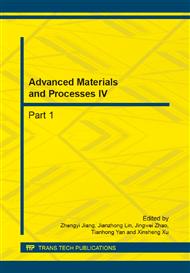p.699
p.703
p.707
p.712
p.717
p.721
p.726
p.734
p.738
Simulation of Subcritical Crack Growth in Dissimilar Weld Joints with Extended Finite Element Method
Abstract:
The crack growth behavior in dissimilar weld joints is affected by the mechanical heterogeneity of materials. The subcritical crack growth in dissimilar weld joints was simulated by adopting extended finite element method. The results indicated that the strength mismatch will affected the subcritical crack growth behavior. The growth direction of subcritical crack in material with higher strength will deviate to the interface, and the crack may advance through the interface to material with lower strength if the strength mismatch is critical. The cracks will advance away from the interface if the subcritical crack in soft material.
Info:
Periodical:
Pages:
717-720
Citation:
Online since:
September 2014
Authors:
Keywords:
Price:
Сopyright:
© 2014 Trans Tech Publications Ltd. All Rights Reserved
Share:
Citation:


